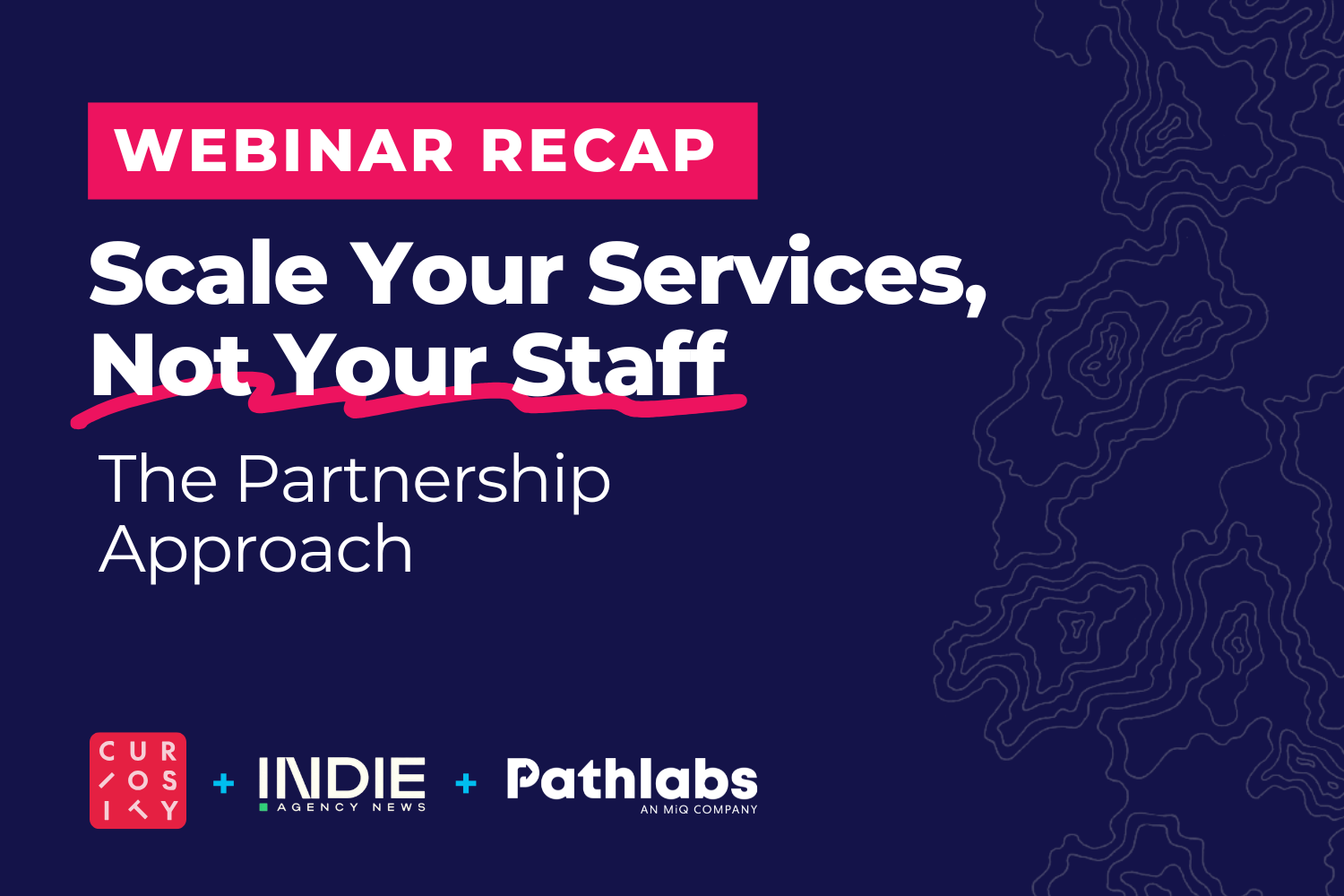Understanding Pacing in Digital Advertising & Optimizing Results
| Pathlabs Marketing |
| April 30th, 2024 |
In this blog, we delve into the concept of pacing in digital media execution and examine the strategies media teams use to manage it effectively. Let’s get started.
What Is Pacing in Advertising?
Pacing Definition
Pacing in advertising refers to the management of how a media campaign’s budget is spent over its flight’s duration. Media teams primarily deal with pacing when executing digital media campaigns using platforms like The Trade Desk, DV360, Google Ads, and various paid social ad managers.
While building campaigns on these platforms, these teams establish a budget and set flight dates, among other parameters. Once the campaign launches, the platform starts bidding and serving ads to target users.
In this case, ‘pacing’ is essentially the rate at which the ad platform spends this budget and, in effect, serves ads to users during the campaign’s flight.
For instance, if the team executes a display campaign on The Trade Desk (TTD) with a budget of $10,000 over thirty days, the pacing dictates how TTD allocates and spends this budget to serve ad impressions to users while the campaign is live.
How to Control Pacing
Depending on the channel and platform used for campaign execution, teams can implement a few controls to influence the pacing of their budget:
Daily Spending Limits: Teams can set daily budget limits in platforms; once the day's budget is exhausted, the platform halts serving ads for the campaign until the next day.
Dayparting: Teams can specify days and times when ads should or should not be served, strategically allocating the budget to peak periods.
Pacing Cadences: Platforms offer cadence settings like 'Pace Ahead,' 'Pace Evenly,' or 'Pace ASAP.' 'Pace Ahead' has the platform spend more budget towards the beginning of the campaign, slowly tiering off. 'Pace Evenly' distributes the budget consistently across the campaign duration, and 'Pace ASAP' aims to spend the budget as quickly as possible.
Performing Pacing Checks
While an ad campaign is live, media experts also conduct what we call 'pacing checks.' Using the reporting features of the ad platform or an additional tool, they will assess:
The amount of the campaign budget spent so far and its remainder.
The number of days left in the campaign flight.
The delivery progress of the campaign's set performance objectives, such as impressions, views, click-through rates, etc.
Teams may calculate and assess additional custom pacing metrics. Based on the insight gained from this pacing check, teams will perform campaign optimizations to ensure the budget spending and performance delivery are on track.
The Importance of Pacing in Digital Advertising
Implementing controls around pacing and conducting regular pacing checks when executing digital media campaigns is important, as it ensures a campaign's budget spends in full and that the overall performance objective is met by the flight’s end.
Especially when executing campaigns using sophisticated advertising platforms, whether it is the fault of the platform’s machine learning algorithms or another factor, the platform may incorrectly spend the budget.
It may spend funds too quickly, exhausting it before meeting the campaign objectives. On the other hand, the platform may spend the budget too slowly, making the team scramble to spend the surplus of funds and meet performance goals before the campaign's conclusion.
By monitoring and adjusting pacing, media teams can intervene and tweak the campaign setup early on, ensuring complete budget expenditure and timely meeting of campaign objectives.
“Effective pacing becomes even more critical in the competitive agency landscape, where independent agencies manage digital campaigns for brands, as brand clients expect agencies to use their entire campaign budget. Even if the media team meets the client’s performance goals, if the campaign ends with unspent funds, clients might perceive this as leaving money on the table. They could make the case that even the smallest, unspent portion of funds could have been better monitored and spent during the campaign’s execution, driving even more performance.”
Factors That Influence Pacing in Ad Campaigns
Basic Pacing Factors Set by Media Team
As mentioned, during the campaign's initial setup in the ad platform, media teams establish basic pacing controls such as daily budget caps, dayparting schedules, and pacing cadences like ‘Pace Ahead,’ ‘Pace Evenly,’ or ‘Pace ASAP.’ These set the main rails around the budget pacing.
Impression Availability and Seasonality
A significant factor impacting budget pacing once a campaign goes live is the availability of ad impressions. This availability constantly fluctuates based on the actual user traffic on publisher sites or, in the case of paid social media, user traffic on the walled garden platforms.
If few impressions are available at a given time or in a given audience, the platform may have difficulty finding enough users to serve ads to and spend the budget.
On the other hand, if a specific seasonal event or holiday increases online traffic, this can boost the availability of impressions and the potential for the platform to pace the budget. However, prices will likely increase due to the demand, which can eat up the budget faster, quickly leading to overspending.
Due to this variability, ad platforms often use their machine learning algorithm features to track these fluctuations and adjust the campaign's pacing in response. The platform may increase budget spending—even past the daily limit—when they can get the best prices/performance or reduce spending when prices rise.
Bidding Ranges and Inventory Quality
Higher bids in ad auctions generally accelerate the pace of budget spending, as does targeting more desirable, costly ad placements in premium locations or through private marketplaces (PMPs).
Audience Targeting
Highly specific audience targeting can slow budget pacing as the platform has fewer impressions available from these target users. On the other hand, if the targeting is broad, the platform will have no problem finding users to serve ads to and spend the budget, but this might not be the best approach for reaching ideal target users and driving performance.
Best Practices for Effective Pacing
Perform Frequent Pacing Checks
Regular pacing checks are crucial! At Pathlabs, for instance, our campaign analysts conduct daily pacing checks to ensure campaign budgets are spent in total and performance goals are met by the end of the flight.
“These frequent pacing checks act as a safeguard, enabling us to identify and address budget spending issues promptly. Even if we do ultimately fall short of spending the total budget or meeting performance objectives, thanks to previous pacing checks, we will have already anticipated it and prepared client expectations well in advance.”
Pace Ahead
A standard best practice in digital media execution is to pace ahead. Many teams aim to spend about 60% of their budget in the campaign's first half. This front-loading approach helps secure sufficient performance upfront and mitigates the risk of price increases as the month progresses – which are common. However, there will be cases where it makes sense for the campaign to pace more evenly to ensure funds stretch out for the entirety of the flight.
Speeding Up and Slowing Down Pacing
Below are some general tactics teams will implement to speed up or slow down the pacing of their campaign budget.
To speed up pacing, teams may:
Set the campaign to "Pace Ahead"
Set the campaign to “Pace ASAP” - mainly experienced and knowledgeable media buyers should use this cadence feature!
Increase daily spending limits
Bid on more premium, higher-priced inventory
Expand audience and geo-targeting parameters
Remove or raise frequency caps
Expand the times when ads run
To slow down pacing, teams may:
Implement stricter daily spending limits
Set more even pacing cadences
Decrease bid amounts
Narrow audience and geo-targeting
Implement or lower frequency caps
Limit the times when ads run
Pause Overall Campaign Pacing
Know Your Limits of Control
Teams need to recognize that despite diligent tracking and oversight, complete control over budget pacing is not always possible. Since many ad platforms employ complex machine learning algorithms to manage ad serving and spending, they often take campaign parameters and pacing controls set by the media team into account but ultimately adjust strategy based on their own systems.
In some cases, failure to spend in total or spending too rapidly isn't due to the media team’s mismanagement but rather the nature of the platform and the unpredictable external elements influencing pacing.
Future Trends and Considerations
Currently, innovations in pacing largely stem from advancements in machine learning algorithms, particularly those integrated into platforms like The Trade Desk, Google, and Facebook. A clear example is their pacing cadences, such as 'Pace Ahead,' 'Pace Evenly,' and 'Pace ASAP.'
Facebook, in particular, is taking strides in enhancing these features. For specific campaigns, teams can input just their flight dates, lifetime campaign budget, and objectives. The platform’s AI then autonomously handles pacing and ad delivery – using its own pacing rationale – ensuring that budgets are fully utilized and performance goals are met.
Additionally, the development of more advanced analytics tools is expected. These tools will automatically calculate and report on pacing, providing actionable insights and recommendations to optimize campaign pacing further.
Finding Pace With Pathlabs
Managing the pacing of digital media campaigns demands a high level of expertise to ensure that budgets are fully utilized and performance targets are met by the end of the flight.
This becomes very complex for independent agencies executing numerous digital media campaigns for several brand clients. These agency teams must build and launch these campaigns, setting the initial pacing. In addition, they also have to perform consistent pacing checks for each to ensure that everything is on track. With all this work, managing pacing feels like a full-time job.
To alleviate this burden, these agencies can consider collaborating with a Media Execution Partner (MEP). MEPs offer specialized workflows, technology access, and, most notably, a team of trained professionals dedicated to assisting agencies with their media execution.
The MEP’s team steps in to execute campaigns, make informed pacing decisions, perform pacing checks, and report on any issues for the agency, freeing up time for their team to focus more on high-level planning and scaling their business.
Additionally, the MEP provides tips and tricks that level up the team, helping them provide future service and answer their brand clients' questions around pacing the right way. Contact Pathlabs below to learn more about pacing and how an MEP can help your agency navigate it.












